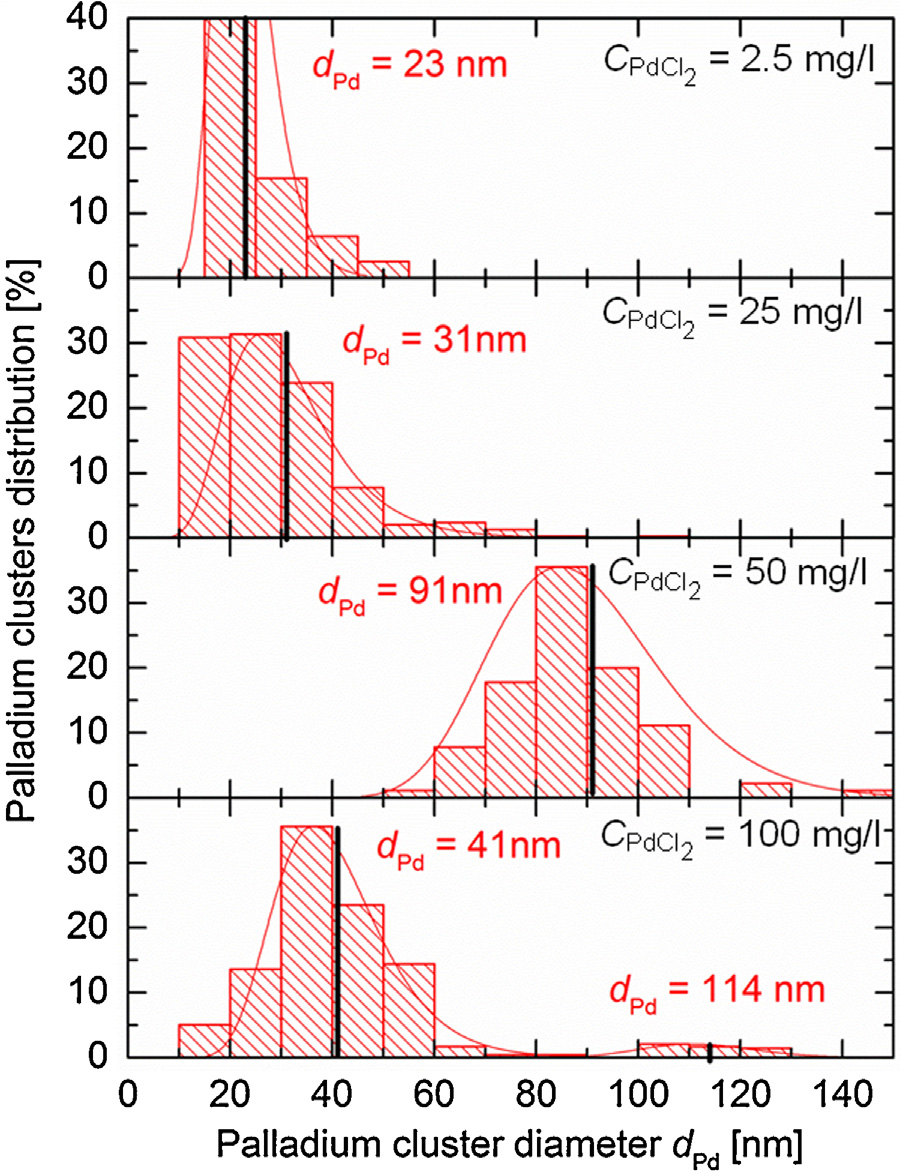A catalyst activates the etch solution in metal assisted chemical etching e.g. of crystalline silicon in aqueous etch solutions containing hydroflfluoric acid and nitric acid. This work shows for the fifirst time that the catalyst surface concentration determines the metal assisted etch process: The amount of electroless deposited palladium clusters on the silicon surface controls the etch rate, etch regime and resulting surface morphology independent of etch solution composition. Increasing palladium concentrations change the resulting surface morphology stepwise from macro-structured through macro- and nano-porous to polished, whereas catalyst-less etches result in polished surfaces. We adapt the well-known model of electro-chemical etching to explain the catalyst inflfluence on silicon dissolution and show a clear analogy between catalyst concentration in metal assisted etching and current density in electrochemical etching.
Since its discovery in 1956, porous silicon is under intense investigation and promises a wide spectrum of potential applications in optoelectronic , photovoltaics , sensoric , micromachining , and energy storage . Anodic electrochemical etching in hydroflfluoric (HF) solutions and stain etching in solutions of HF and oxidant are commonly used methods of porous silicon fabrication . Nevertheless, metal assisted etching (MAE) also attracts an increasing attention as a novel method of porous silicon etching , where previously deposited noble metal layers or particles act as catalyst for oxidant reduction in the etching solution and provides the required hole-current for silicon dissolution . Preferred metal catalysts are silver, gold, platinum and palladium deposited by various techniques such as sputtering , evaporation , electrochemical or electroless displacement . The metal occurs as spatially separated nano-clusters or as a continuous metal layer depending on the deposition method. After metal deposition, a solution containing hydroflfluoric acid and an oxidizing agent such as hydrogen peroxide or nitric acid etches the silicon. Although a theoretical model of etching exists for both continuous and locally distributed metal catalyst on silicon, unfortunately, the inflfluence of the metal concentration on the etching process has remained unknown.
This work investigates the inflfluence of the noble metal concentration on metal assisted chemical etching of crystalline silicon. We revealthe surface concentration of palladium to be a key parameter inflfluencing both the etch rate and the resulting surface morphology for a wide range of HF/HNO3 concentration in the etch solution. We show a clear analogy betweenmetal catalyst concentration inmetal assisted etching and current density in electrochemical etching.
The dissolution of m = 12 g of silicon activates each HF/HNO3 etching solution prior to etching. The activated solutions show a lightly yellow colour due to the generation of HNO2 and NO2. Then, 18 String Ribbon wafers are etched simultaneously at a controlled temperature T = 15℃ and in an agitated etching volume V = 20 l. A single batch consists of wafers with fifive different palladium surface concentrations and one reference group without palladium, with three wafers in each group.

Fig1
Themetal assisted etching combines chemical and electrochemical etching processes. Thus, metal assisted etching depends on two main parameters: HF acid concentration in the etch solution and Pd catalyst concentration on the silicon surface. The HF acid concentration inflfluences both chemical and electrochemical etching of silicon, whereas the Pd concentration determines the electrochemical etching process. In the following, we analyze the inflfluence of the HF concentration in the etch solution and the Pd surface concentration on the resulting silicon surface morphology, etching rate and electrochemical current density.
Chemical etching of silicon in HF/HNO3 solutions without catalyst is well known in literature: At low ratio of HF to HNO3, HF diffusion limits the silicon oxide removal and therefore controls the surface morphology and etching rate . Thus etching at low HF concentration results in a polished surface independent of crystal orientation. With higher HF concentration, the silicon oxide is continuously striped from Si and the availability of HNO2 and NO for silicon oxidation becomes a limiting factor .